In every place you visit around the world, natural sights are sure to steal the show. No two places are ever the same and experiences can be completely spontaneous depending on the environment and climate. The Philippines alone is home to two-thirds of the world’s biodiversity. It is plentiful in various land and water forms, and the climate is perfect for sustaining wildlife. While hitting all the nature-rich spots around the country is something you should definitely do, the very first stop you should be making is in Cebu. Cebu is made up of over 160 islands. Who knows what kinds of natural spectacles you could find?
Water
When one hears Cebu, the first thing that comes to mind is BEACH! While its shores are famous for fine white sand and crystal-like water, Cebu also flows with fresh water found in breathtaking destinations. Here are just some notable places you can visit if you love splashing about.
Mabugnao Mainit Hot Spring National Park
The Mabugnao Mainit Hot Spring National Park can be found in the small town of Guadalupe, Carcar City. The park is 57.5 hectares with trails leading to some caves where tourists can go spelunking. The park’s more famous features, however, are its hot spring and a pool of cool freshwater. The freshwater pool’s water source is an underground spring, which also provides the city’s water supply. One of the park’s three caves, Cave Lorett, even gives you access to another spring and four rivers!
Before heading out on the trail, food stalls are present in the area. So if you don’t have any snacks with you, this is the best chance for you to buy everything you need. However, do observe the “leave no trace” rule in trekking. The best way to end the trip is to submerge yourself in the clean and therapeutic pools of the national park after a long exploration of the surrounding caves and trails.
Dao Falls
Kawasan Falls may be the more popular tourist magnet, but Dao Falls is a destination away from the crowds where you can keep nature’s beauty all to yourself. From the jump-off point, the falls is a scenic 30-minute trek away. For most of the trek, you will find yourself wading in waist-deep water with a captivating blue hue. As you walk on, lush leaves and fern provide a serene covering overhead.
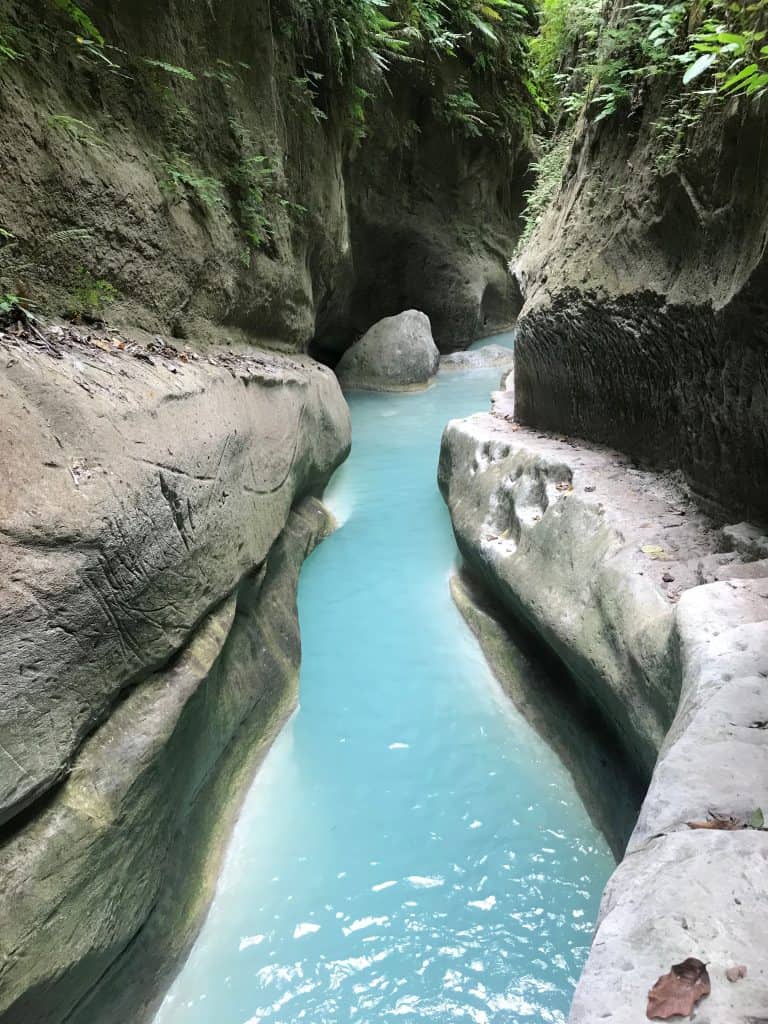
Hiring a guide is very much recommended as some of the steps and rocks on the trail may be slippery. Dao Falls is around 40-50 meters high with fresh water flowing down into a mesmerizing pool where you can swim around to your heart’s delight.
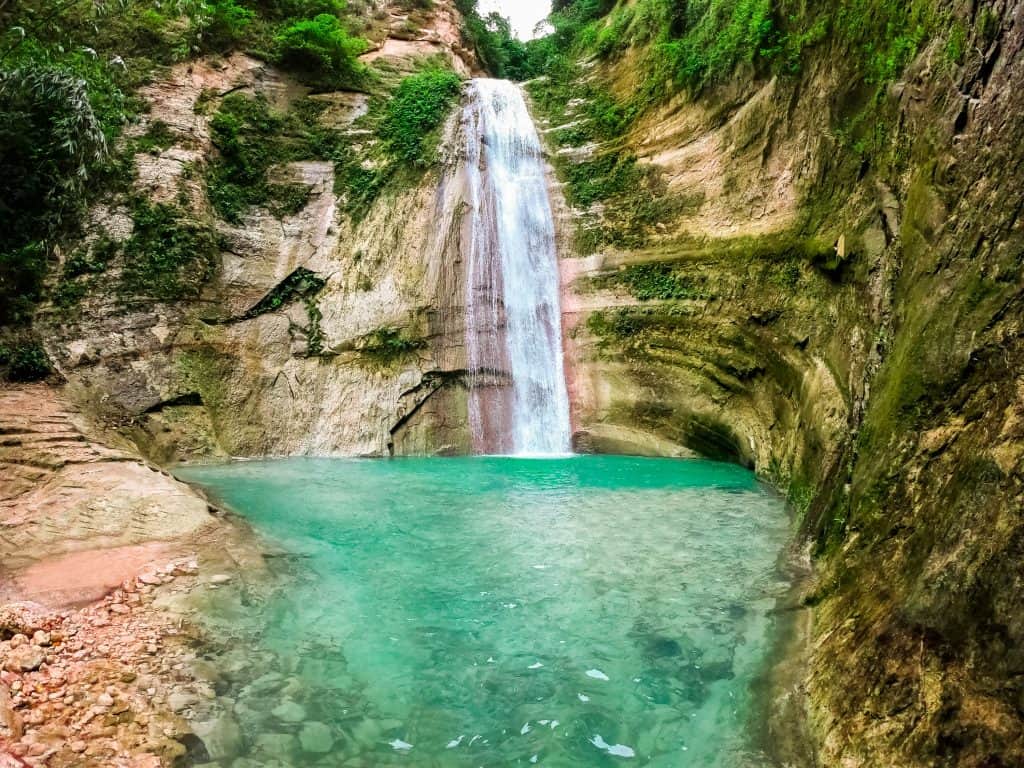
Camotes Islands
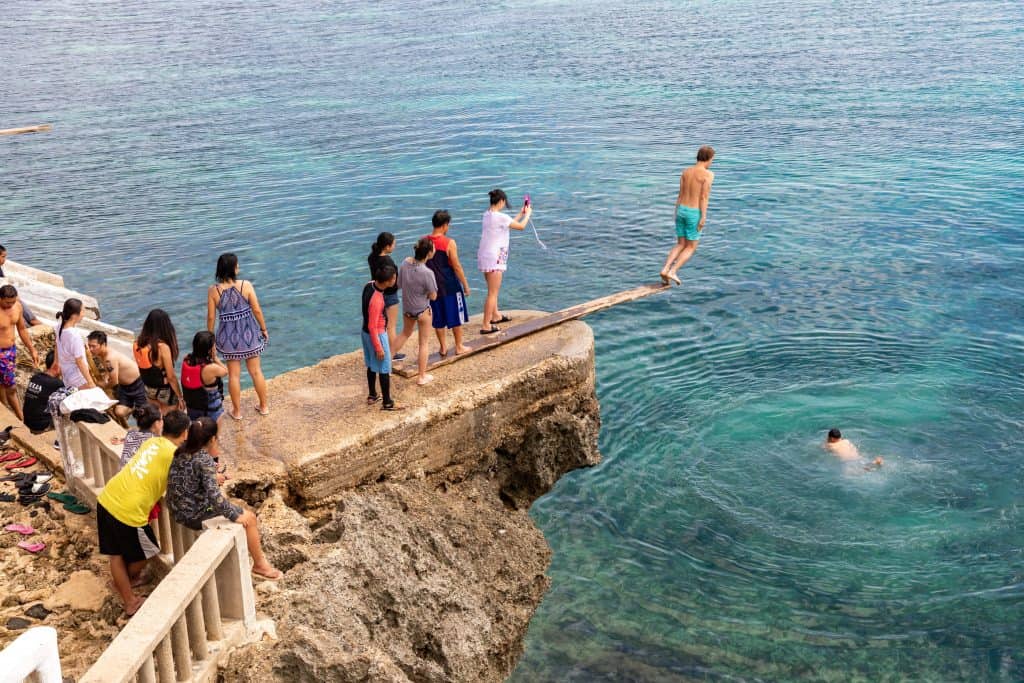
The area was named after the local term for sweet potatoes after a native misunderstood the Spaniards who were asking what the place was called. Camotes is one of the most budget-friendly destinations you can visit in Cebu and it is full of different places worth stopping by. For an affordable fee, you can explore the main island via habal-habal (rented motorbike) if you know how to drive one. With a variety in land and water forms, there are a great number of other activities you can do such as cliff-diving, free diving, snorkeling, kayaking, and even spelunking.
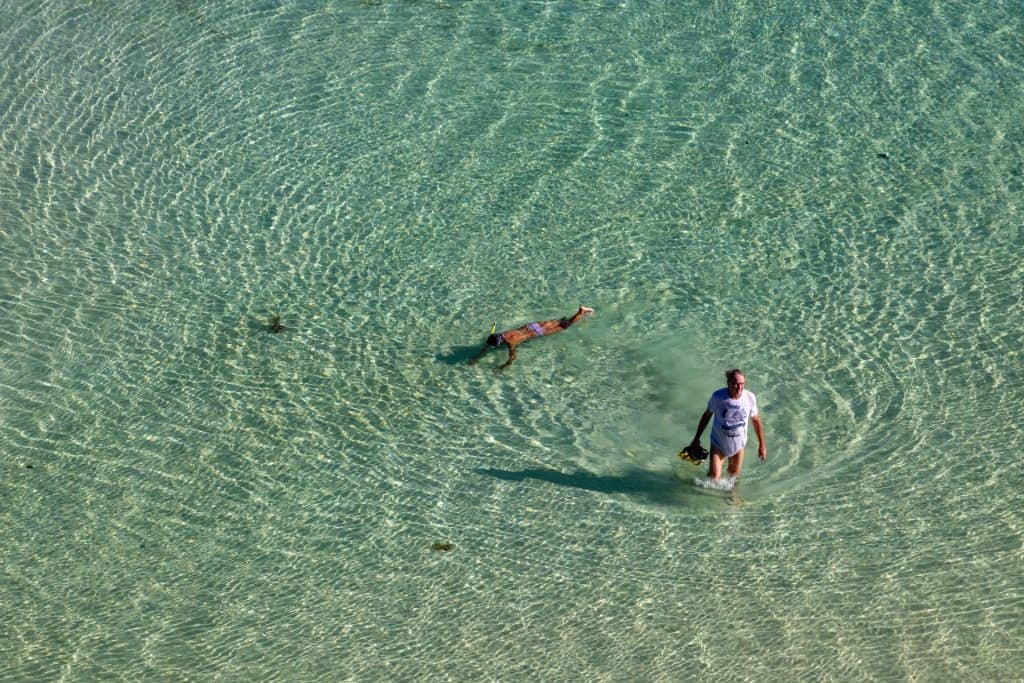
A great place to go sunbathing and swimming is at Santiago Beach where entry is free. If you’re looking for something more adventurous, take a quick trip to Poro for some cliff diving at Buho Rock. Marvel at the astonishing geological forms of Bukilat Cave where you can also swim in a nice underground pool. Finally, find yourself surrounded by lush greenery as you float in the water with only the sound of Busay Falls keeping you at peace. At the Camotes Islands, natural forms are abundant, and you will find yourself at the heart of it all.
Land
Besides beaches, Cebu is also famous for its landscapes and unique terrains. Most of the islands are made of limestone and years of weathering have created the interesting natural forms we see today. Take the roads—or trails—less travelled to see Cebu’s earthly beauty.
Cebu’s Rock Formations
What people call the Stone Ark at Mulao River is a must-see for nature-trippers like you. From above, these natural rock formations appear scattered and fragmented. However, once you get closer at ground level, you will discover how massive they actually are! What makes these rocks even more interesting is that despite their rigid appearances from afar, many have smooth and interesting shapes and textures. Trails beside the river make for a pleasant trek.
For climbing enthusiasts, there are places for you in Cebu. Crags you can climb and admire from a distance can both be found near the central area of the main island. One is called the Poog crag, which is beginner-friendly, and the other is the Cantabaco crag, also a good spot for easy routes. Climbers from around the world visit Cebu to scale or go bouldering on these wall-like rocks.
Osmeña Peak
Cebu’s tallest mountain can be found in the town of Dalaguete. Osmeña Peak goes as high as 1,013 meters above sea level. It’s best to start the hike a couple of hours before sunrise since it takes about 45 minutes to an hour. By the time you reach the summit, you can sit and watch the sunrise and see its golden rays creep across the hills.
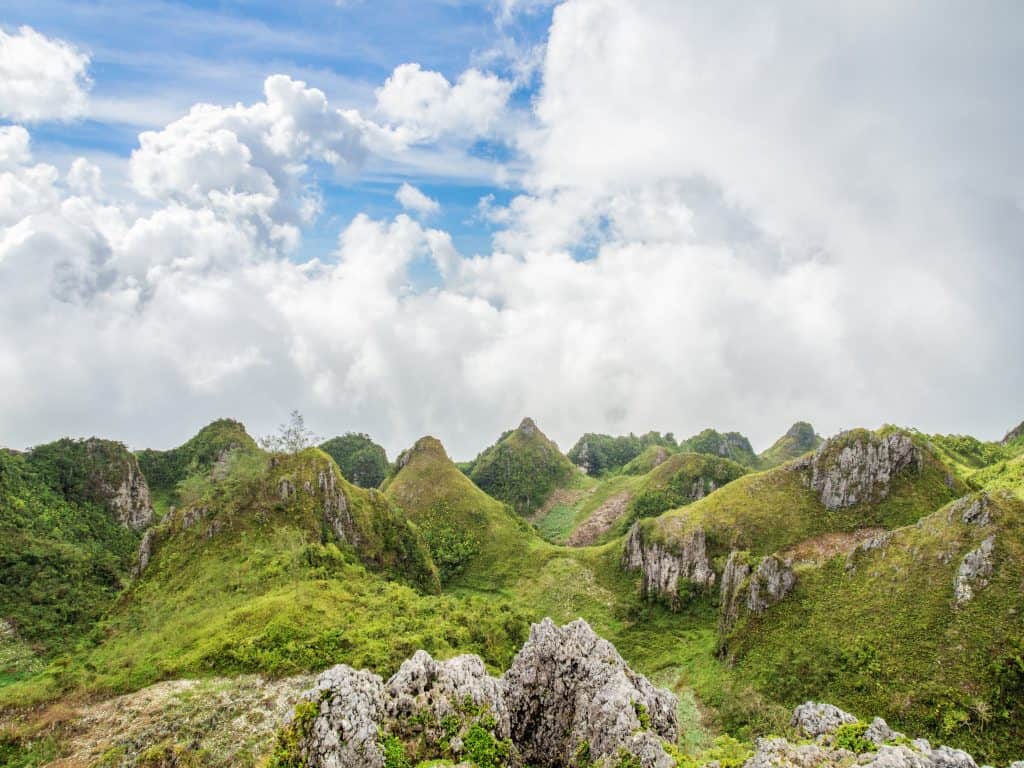
To enjoy an exclusive show of the sunrise, avoid the crowds by planning your hike on a weekday when all the locals are at work. Adventures are also free to set up camps in certain areas. A perfect opportunity to go stargazing on Cebu’s highest point, don’t you think?
Life
Cebu is known to be the home of various marine life. However, Cebu’s biodiversity spans out above the water and even on land. Many rare plants and animals can also be found within its several forests. So bring out your binoculars and put on some earth-tones clothes for some nature-watching in Cebu.
Olango Island Wildlife Sanctuary
Every migration season, the sand flats and mangroves of Olango Island Wildlife Sanctuary serve as a terminal for birds coming from Siberia, Northern China, and Japan. The sanctuary measures up to 1,030 hectares and comes to life with 97 species of birds, 48 of which are species migrating for the winter. Because of its geographical location, the largest group of migratory birds visiting the Philippines can be found on this island.
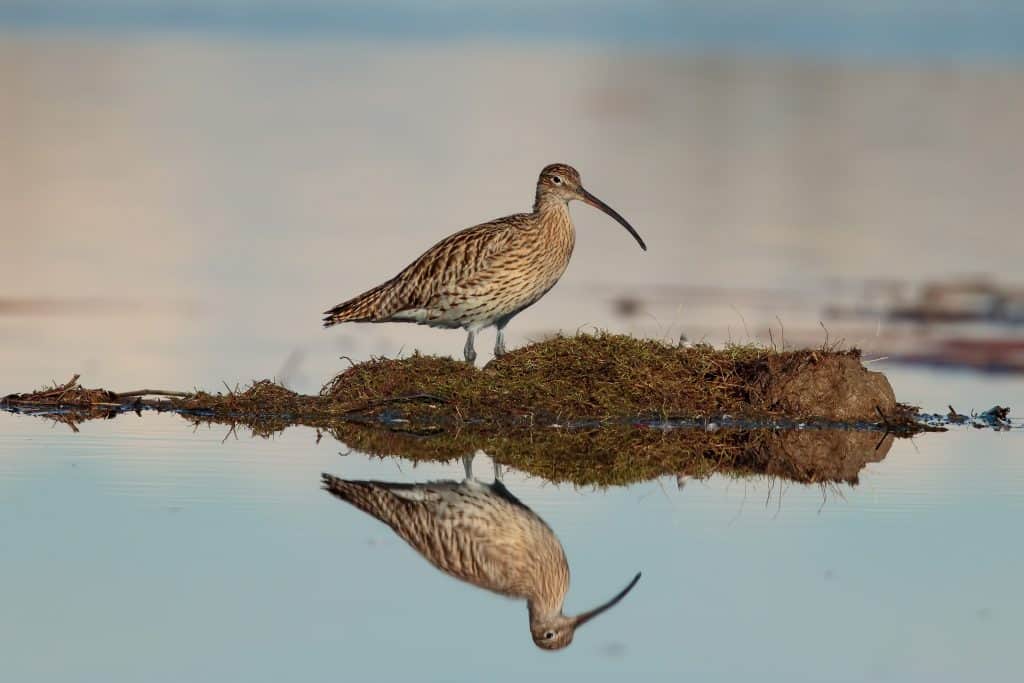
Species such as the threatened Chinese Egret, Asian Dowitcher, Eurasian Curlew are just some of the birds you can spot during the peak months of the migration period. Before visiting the sanctuary, be sure to map out all the details such as the times of low-tide in the area, and the peak months of migration.
Alcoy Forests
In the southern part of the main island, more safe havens exist for a lot of endemic species. The treasured forests of Alcoy serve as adequate habitats for 103 bird and bat species, and beds to several plant species. One of the forests is considered to be the largest in Cebu. The ancient forest, Mag-abo, spreads out 600 hectares wide, and it houses a rare endangered bird called the Black Shama. The nearby town recognizes the forest’s value so much that it holds a festival named after the Black Shama called Siloy, the local term for the bird.
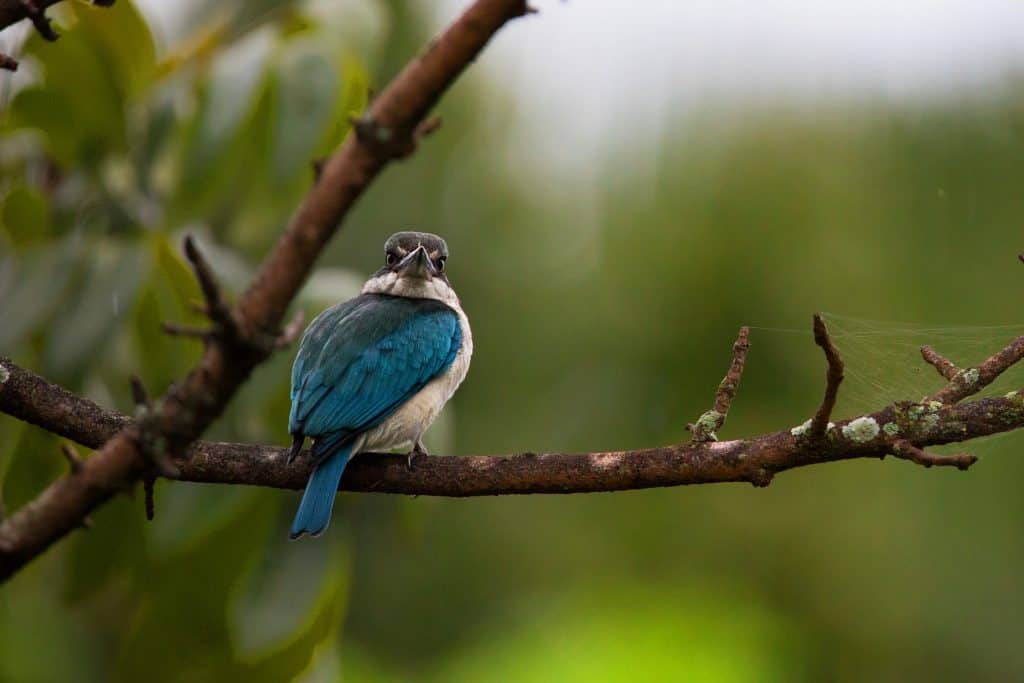
Apart from the Black Shama, other rarities such as the Cebu Hawk Owl and the Cebu Flowerpecker, can be found in the Alcoy forests. They were once believed to be extinct but now considered critically endangered birds. For reptile enthusiasts and lizard lovers, another unique find is the Cebu Small Worm Skink. This species of skink is one of only two skinks that has an uneven number of toes and fingers. If you’re interested in learning more about the Alcoy forests, Nug-as Forest Reserve is a more popular name to search online.
Spending time in nature reminds us how much life is actually out there. Once in a while, it’s healthy to take a break from the concrete jungle, and see what’s on the other side of the world.
More information about Cebu destinations for the nature-tripping backpacker:
Did you find this article helpful? While we’re confident about our opinions, here are some other equally helpful articles for the nature tripper in you:
- Impressive Rock Formations At Mulao River from Queen City Cebu
- Dip Into Cebu’s Hot Springs from Nikki Tampos, Everything Cebu
- Osmeña Peak Hike On Cebu For Sunrise from Jackson Groves,Journey Era
Pin now, read later
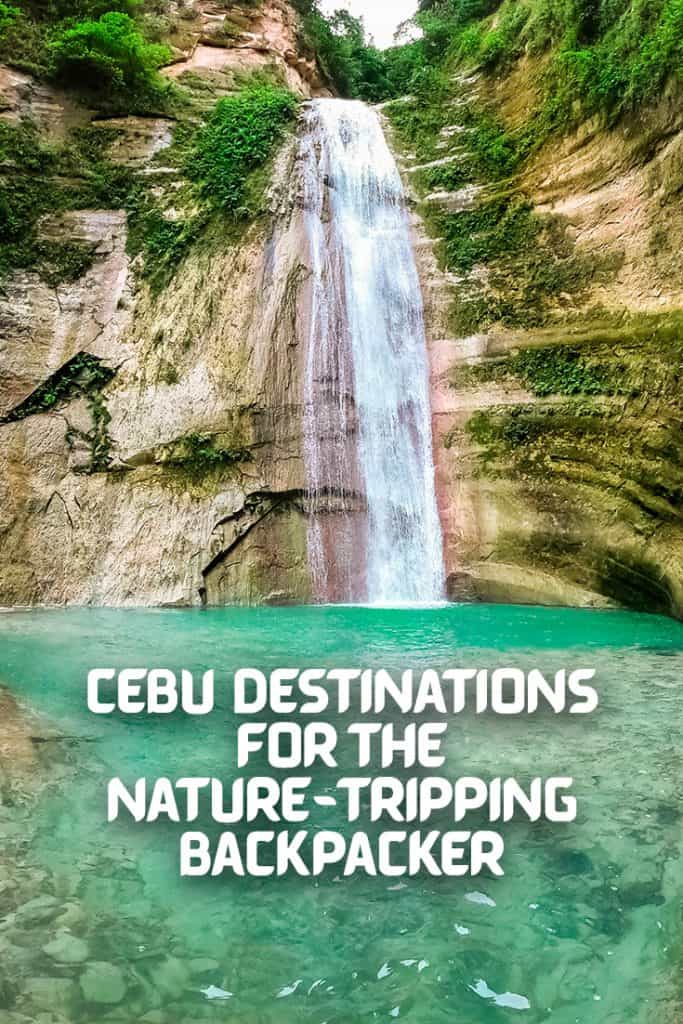
This article was written by Gabbi Reyes for Mad Monkey Hostels.


